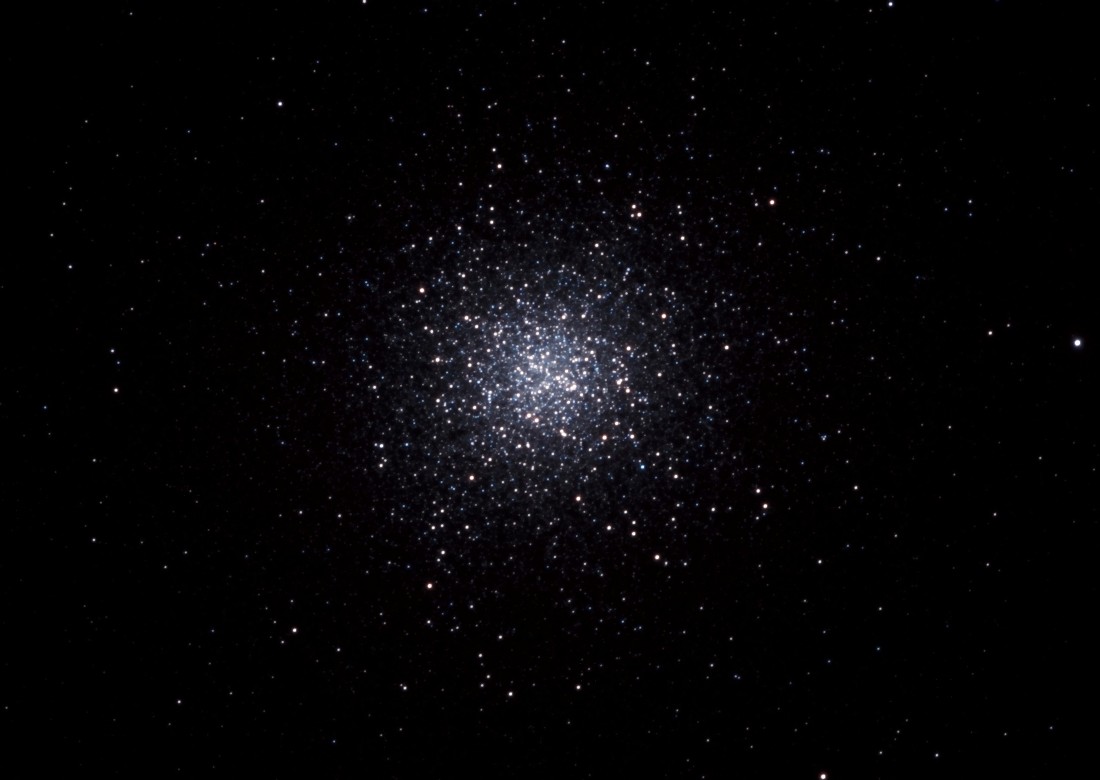
|
|
|
M13, NGC 6205, Heracles Cluster
This image is cropped from, and reduced to 50% of, the original photo. For the full rez, full frame image (2m-bytes 21m-pix) with additional capture and processing info, cluck HERE Many photos don't look like what you will see by eye at a scope. But in this case this is pretty much what you will see with a 10"-12" scope.
Location, RA. 16:41:7 Dec 36:28, In the constellation of Hercules, Size. 20 arc minutes, Brightness Mag 5.8, Distance. 25,000 light years, fairly high above the central bulge of our galaxy
|
|
M13 is usually considered the best globular cluster of the northern celestial hemisphere. It passes through the high parts of the sky from springtime to the middle of summer. It is located ahead of (west of) the summertime Milky Way, between the two western keystone stars of Hercules, about 1/3rd of the way below the upper star. Under very good conditions it can be seen without optical aid. With binoculars, it appears as a small fuzzy distinctly non stellar patch. In a 10" scope or larger, the stars resolve to individuals all the way to the core. The bigger the telescope, the better this globular cluster gets. About 25,000 light years away, M13 is further away than most globulars. But because it is further above the central bulge of our galaxy, it is not dimmed as much by the core area dust and debris. There are maybe a half million stars in M13, spread over 125 light years. Only the biggest and brightest can be seen. Not even the biggest telescope on earth, or in space, can see a sun sized star at 25,000 light year's distance. Like all globulars, M13 is old, at least 12-13 billion years old. It, and most other of the 120 known GC's, had substantially formed themselves into stable entities at the time our Milky Way Galaxy was getting itself together.
|
|
11" Celestron Edge, f10 - 2800mm F.L., Schmidt Cassegrain Telescope Canon
5D Mark II, spectrum enhanced camera, placed at the scope's prime focus,
IDAS's Light Polution Filter |
|
EARLIER PHOTOS, showing progression of skill and equipment over time 5-9-2010 Photo |